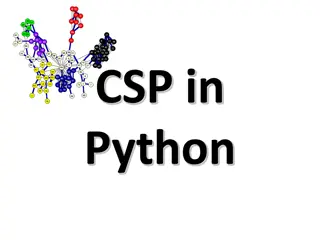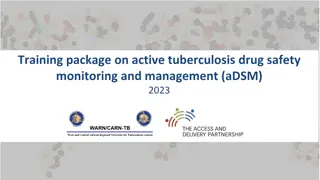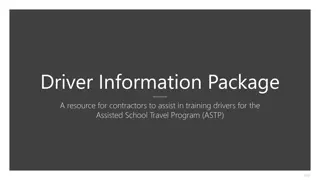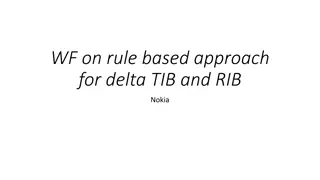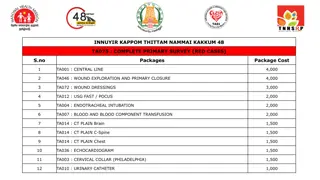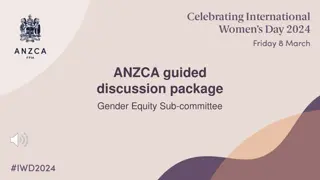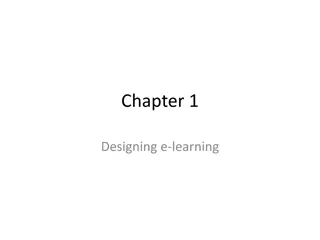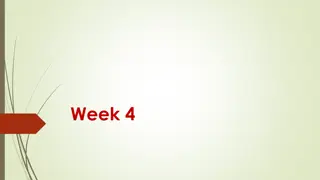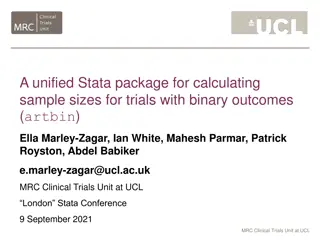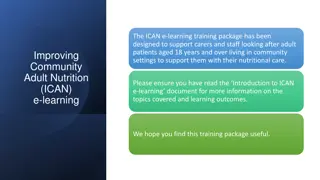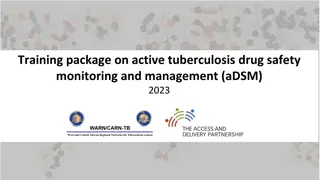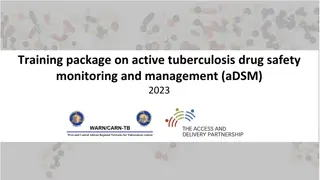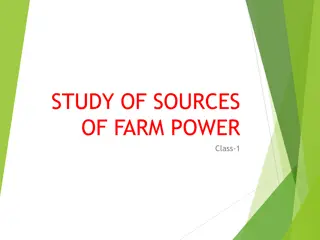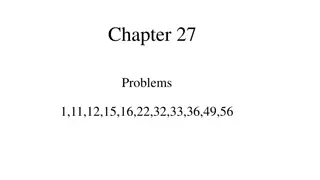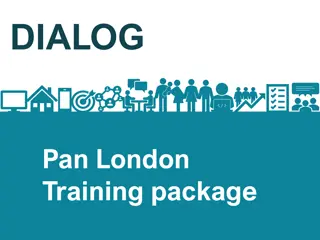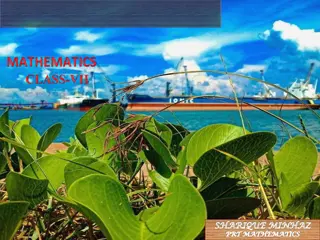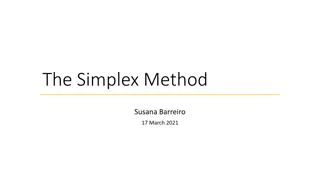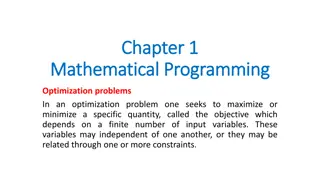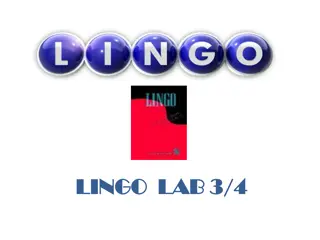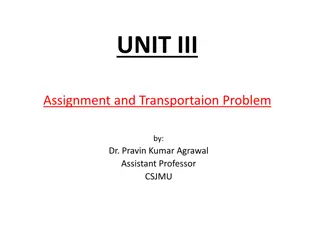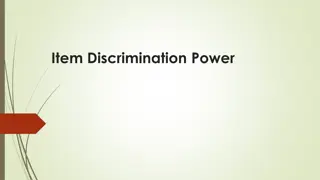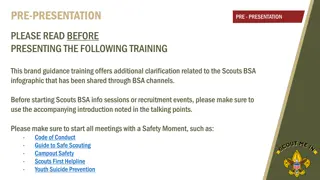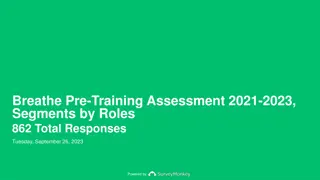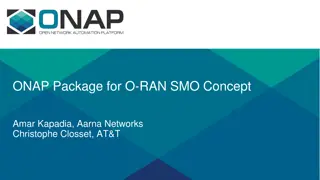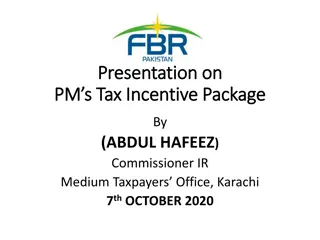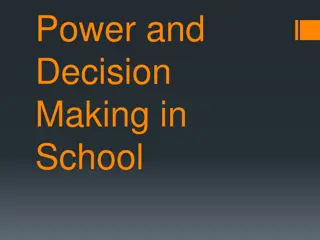Analyzing Power and Defining Problems in UN Training Package
Explore the UN Training Package on Analysis focusing on defining problems, understanding power dynamics, analyzing contexts, mapping stakeholders, and bridging to strategies. Gain insights on using the 5Ys method, involving stakeholders, and leveraging power frameworks like the Power Cube. Unpack the levels, forms, and spaces of power to navigate visible, hidden, and invisible influences.
Download Presentation

Please find below an Image/Link to download the presentation.
The content on the website is provided AS IS for your information and personal use only. It may not be sold, licensed, or shared on other websites without obtaining consent from the author. Download presentation by click this link. If you encounter any issues during the download, it is possible that the publisher has removed the file from their server.
E N D
Presentation Transcript
UN training package: on Analysis we will cover 5 topics Defining/Refining the Problem Understanding Power Analysing the Context Mapping the Stakeholders The Bridge to Strategy
When thinking about the problem, where you start will probably not be where you finish
Top Tips on Defining the Problem Don t do this alone who might have additional insights (eg people affected by the problem and/or colleagues from other institutions)? Convert the problem into a Question and apply the 5Ys ( why does this happen? ) Don t be satisfied with generic problems like lack of political will/leadership or corruption keep digging Stop when you are satisfied that you have a clear, manageable problem with a likely point(s) of entry for influencing
Practitioner Frameworks for Understanding Power Visible/Hidden/Invisible (descriptive context analysis) Power Cube (scoping, especially from local Rao and Kelleher (scoping, especially on gender/social exclusion) 4 Powers (planning/action for your strategy) global)
The Power Cube LEVELS FORMS SPACES http://www.powercube.net/
Unpacking the Power Cube Unpacking the Power Cube Forms Spaces Levels In closed groups Visible Global/Regional Hidden, operates behind the scenes With invited parties National Invisible, based on ideology and beliefs. In created or claimed spaces Local
Rao and Kelleher Rao and Kelleher Individua Individual C l Cha hang nge e W Wom ome en n s a to r to re esour s ac cc ce ess sourc ce es s ss W Wom ome en n s a c consc onsciousne s and m nd me en n s s iousness ss I In nf fo or rm ma al l F Fo or rm ma al l H House ousehold hold C Com omm munity unity F Form orma al institutions l institutions, , la laws ws, pr , pra ac ctic N Na ationa tional l C Cultur ultura al norm v va alue lues s, pr , pra ac ctic l norms s, , tice es s tice es s Globa Global l Sy Syste stem mic ic C Cha hang nge e Adapted from Rao and Kelleher, Gender at Work
Different tactics according to quadrant (the Social Change Project)
4 Powers model (Rowlands 1997) Power Within Power With Power To Power Over
Top Tips on Understanding Power Don t just focus on formal power. Zoom out and think more broadly about the kinds of power that underlie the problem you want to tackle, or that could be harnessed in search of solutions. Choose one or two frameworks that seem to fit your problem avoid framework overkill! You ll only be able to identify these more informal forms of power by involving national staff, experts and affected populations Be patient don t jump into strategy ( what are we going to do ) just yet!
3. Analysing the Context There are two steps for everyday political analysis. Step 1: Understanding interests: What makes people tick? Step 2: Understanding change: What space and capacity do people have to effect change? 5 sets of Questions to ask in each step
Understanding change: What space and capacity do people have to effect change?
Other Questions to ask on Context Is the problem one of a failing process? If so, worth doing some Process Mapping (see ) to identify possible points of entry for influencing
And others Lots to know about Context! Windows of Opportunity Is your proposed change likely to be opposed or unopposed? What relevant national laws and regulations exist are they being implemented? Historical legacy Ideologies, religion, culture, and values
Top Tips on Analysing the Context Involve national staff and partners they will have a much better grasp of interests, history and what is hidden, but understood Don t default back to formal power and institutions keep informal power (behind the scenes influence, social norms etc) in your sights, at least for now. Ditto culture and history these shape how people see themselves and the possibilities of change. It s not just laws and institutions.
4. Mapping the Stakeholders Start with a list Stakeholder category Relevant stakeholders What kind of power do they hold? Degree of influence over your desired change Degree of agreement/disagreement with your goal Who/what influences them? For Visible/Formal power, plot columns 4 and 5 on a stakeholder map For invisible power, use Rao and Kelleher
Rao and Kelleher Rao and Kelleher Individua Individual C l Cha hang nge e W Wom ome en n s a to r to re esour s ac cc ce ess sourc ce es s ss W Wom ome en n s a c consc onsciousne s and m nd me en n s s iousness ss I In nf fo or rm ma al l F Fo or rm ma al l H House ousehold hold C Com omm munity unity F Form orma al institutions l institutions, , la laws ws, pr , pra ac ctic N Na ationa tional l C Cultur ultura al norm v va alue lues s, pr , pra ac ctic l norms s, , tice es s tice es s Globa Global l Sy Syste stem mic ic C Cha hang nge e Adapted from Rao and Kelleher, Gender at Work
Top Tips on Stakeholder Mapping Don t just map formal institutions think about the role of faith leaders/groups, norms, culture etc in driving/blocking change Unpack monoliths, eg government , civil society different ministries or CSOs will have different interests, and be in different places on the 2x2 (eg spending ministries are often opposed by finance ministries) Look for clusters of actors in similar places on the 2x2 these are the building blocks of potential coalitions Test and improve this with partners Down the line, as your knowledge will improve and you will be able to revise and improve these analyses
5. The Bridge to Strategy You can use your Context Analysis, Power Analysis and Stakeholder Map to come up with possible strategies for: Insider reform efforts Combined Insider/Outsider reform efforts Broader attempts to influence social norms
For the Influence/Interest 2x2, identify the clusters D C A B
Clusters different possible Change Strategies Group A: High Influence, High Support Convening unusual suspects ; Gap filling eg on evidence Group B: Low Influence, High Support Build Power With/ Within to increase confidence and organizational voice; link up to more influential players Group C: High Influence, Low Support Messenger not message; Seize Windows of Opportunity Group D: High Influence, Opposed Doubt is our product ; Discredit; Divide and Rule
Top Tips on Bridging to Strategy Make sure your strategy(ies) follow from your analysis don t just default to what you would have done anyway! Don t default to formal institutions you may want to combine influencing for them with outsider tactics and/or norm-shifting Coalitions are usually preferable to going it alone think about who/how to build coalitions. Where to you have convening power to pull players together? Once you ve identified target institutions, do another power analysis to identify who/what influences them (interests, players they respect/fear, narratives that resonate) In future, what kind of analysis will help you refine your strategy? Include such strategy testing moments in your plans
Putting it All Together State the Problem, then Refine it through 5Ys and consultation Initial Power Analysis disentangles different forms of power driving/blocking change For Visible /Hidden Power, use Political Economy Analysis to dig into the context and identify possible points of entry Map the stakeholders to identify clusters of potential targets and allies Use this to shape your choice of strategies Balance of Private and Public (lobbying, litigation, public media etc etc) Narrative, messenger, timing, change coalitions, use of research etc etc For Invisible Power, use Rao and Kelleher to do the same The rest is up to you!


